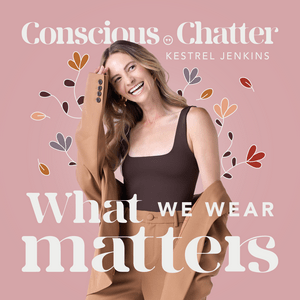Environmental scientist and microplastics researcher Dana Zhaxylykova on the links between fast fashion, toxicity and microplastics
In Episode 328, Kestrel welcomes Dana Zhaxylykova, an environmental scientist & microplastics researcher, to the show. Originally from Kazakhstan, Dana is currently based in Germany — through her Instagram platform, she shares practical and actionable tips about microplastics through a scientific lens. “As a scientist, I want to assure you that every little action in avoiding plastic, it can have an impact. And as scientists and as a scientific community, we expect people, not only the governments and corporations (they have a huge responsibility, of course), but we as people, we also can have an impact as individuals, we can help these problems to get solved faster.”-Dana This month, we’re focusing on diverse ways to combat fast fashion. I don’t know about you, but whenever I think of fast fashion, my brain automatically goes to issues around MICROPLASTICS. Considering that over 60% of global fiber production is synthetic materials – derived from fossil fuels – it’s hard not to make that connection, especially given some of the intimate experiences I’ve had watching scientists from 5 Gyres literally collect microplastics from the water and air around us, and hear them talk about how so many of the microplastics they collect have come from fabric and clothing. As this week’s guest highlights, with nylon, polyester and acrylic fabrics flooding the fast fashion market, these fibers are actually releasing microplastics in every stage of the process – from production, to wearing the garments, to washing and drying them. Basically, there are microplastics being shed into our environment from every single stage of a fast fashion garment’s lifecycle. That feels overwhelming, I know, but I love how this week’s guest really puts things into perspective, not only from a scientific lens, but also from a practical hands-on point of view, offering us suggestions on the things we can actually control, when it comes to microplastics in our lives. “Seasonal variation and removal of microplastics in a central Asian urban wastewater treatment plant”, Dana’s research paper “Effect of microplastics deposition on human lung airways: A review with computational benefits and challenges”, paper Dana mentions “Environmental exposure to microplastics: an overview on possible human health effects”, paper Dana mentions “Effects of microplastic exposure on human digestive, reproductive, and respiratory health: a rapid systemic review”, paper Dana mentions “Polystyrene microplastics exacerbate systemic inflammation in high-fat diet-induced obesity”, paper Dana mentions
